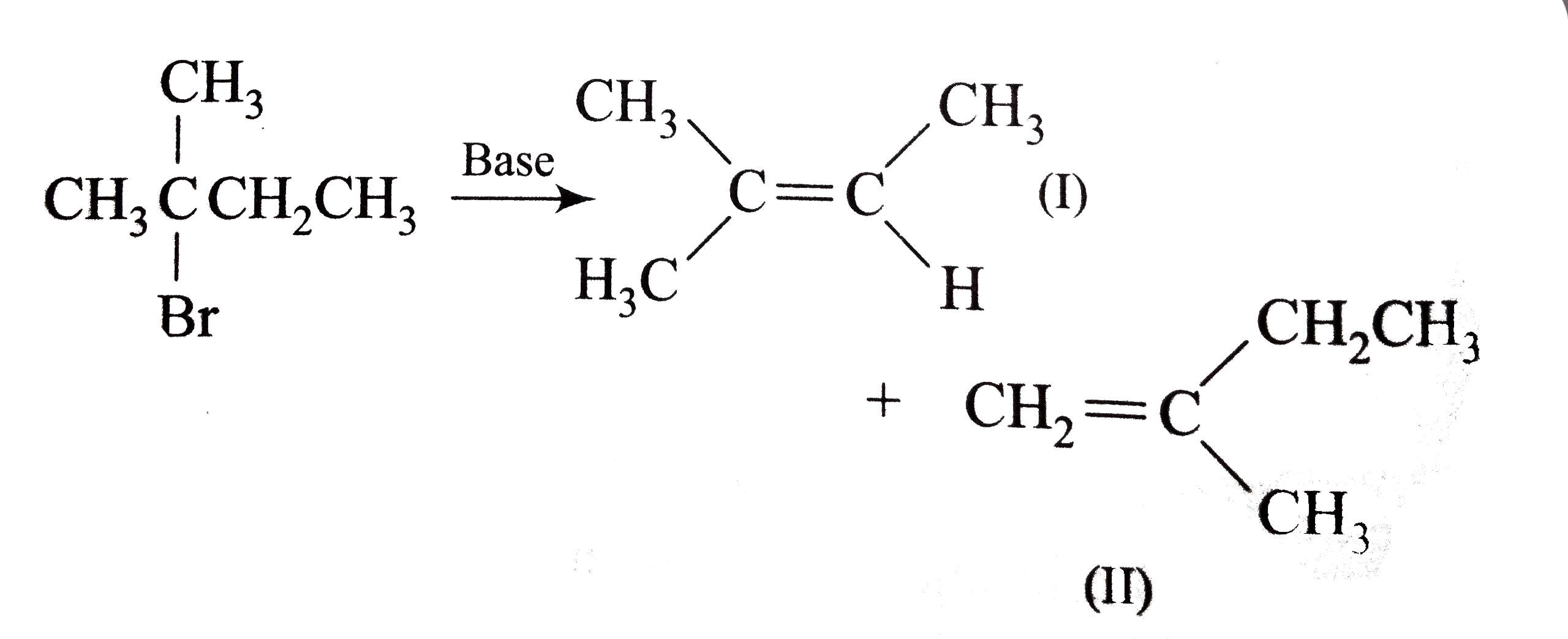one of the following alkenes when treated with HCl yields majorly an anti Markovnikov product ?
F3C−CH=CH2
Cl−CH=CH2
H2N−CH=CH2
CH3O−CH=CH2
To determine which alkene yields a major anti-Markovnikov product when treated with HCl, we need to analyze the given alkenes based on Markovnikov's and anti-Markovnikov's rules.
1. Understand Markovnikov's Rule:
- Markovnikov's rule states that when HX (where X is a halogen) is added to an unsymmetrical alkene, the hydrogen atom (H) will attach to the carbon with more hydrogen atoms (the more substituted carbon), while the halogen (X) will attach to the carbon with fewer hydrogen atoms (the less substituted carbon).
2. Understand Anti-Markovnikov's Rule:
- Anti-Markovnikov's rule is the opposite. It states that in the presence of certain conditions (like the presence of peroxides), the halogen (X) will attach to the carbon with more hydrogen atoms, and the hydrogen (H) will attach to the carbon with fewer hydrogen atoms.
3. Identify the Alkenes:
- We need to analyze the structures of the given alkenes. Let's denote them as:
- (1) CF3CH=CH2
- (2) ClCH2CH=CH2
- (3) NH2CH=CH2
- (4) CH3OCH=CH2
4. Evaluate Each Alkene:
- For CF3CH=CH2: The CF3 group is a strong electron-withdrawing group. When HCl is added, the positive charge will be less stable on the carbon attached to CF3, favoring the formation of an anti-Markovnikov product.
- For ClCH2CH=CH2: Chlorine can stabilize the carbocation through resonance. Thus, it will likely follow Markovnikov's rule.
- For NH2CH=CH2: The amino group (NH2) can stabilize the carbocation, leading to a Markovnikov product.
- For CH3OCH=CH2: The methoxy group (OCH3) can stabilize the carbocation through resonance, leading to a Markovnikov product.
5. Conclusion:
- Among the given alkenes, CF3CH=CH2 will yield a major anti-Markovnikov product when treated with HCl due to the destabilization of the carbocation formed by the CF3 group.
Final Answer:
The alkene that yields a major anti-Markovnikov product when treated with HCl is CF3CH=CH2.
- Markovnikov's rule states that when HX (where X is a halogen) is added to an unsymmetrical alkene, the hydrogen atom (H) will attach to the carbon with more hydrogen atoms (the more substituted carbon), while the halogen (X) will attach to the carbon with fewer hydrogen atoms (the less substituted carbon).
- Anti-Markovnikov's rule is the opposite. It states that in the presence of certain conditions (like the presence of peroxides), the halogen (X) will attach to the carbon with more hydrogen atoms, and the hydrogen (H) will attach to the carbon with fewer hydrogen atoms.
- We need to analyze the structures of the given alkenes. Let's denote them as:
- (1) CF3CH=CH2
- (2) ClCH2CH=CH2
- (3) NH2CH=CH2
- (4) CH3OCH=CH2
- For CF3CH=CH2: The CF3 group is a strong electron-withdrawing group. When HCl is added, the positive charge will be less stable on the carbon attached to CF3, favoring the formation of an anti-Markovnikov product.
- For ClCH2CH=CH2: Chlorine can stabilize the carbocation through resonance. Thus, it will likely follow Markovnikov's rule.
- For NH2CH=CH2: The amino group (NH2) can stabilize the carbocation, leading to a Markovnikov product.
- For CH3OCH=CH2: The methoxy group (OCH3) can stabilize the carbocation through resonance, leading to a Markovnikov product.
- Among the given alkenes, CF3CH=CH2 will yield a major anti-Markovnikov product when treated with HCl due to the destabilization of the carbocation formed by the CF3 group.
The alkene that yields a major anti-Markovnikov product when treated with HCl is CF3CH=CH2.
Similar Questions
Knowledge Check
Diethyl amine when treated with nitros acid yields
Adiethyl alcoholBN nitroso diethyl amineCN nitroso diethyl amneDtriethyl ammonium nitriteDiethyl amine when treated with nitros acid yields
Adiethyl alcoholBN nitroso diethyl amineCN nitroso diethyl amneDtriethyl ammonium nitriteDiethyl amine when treated with nitrous acid yields
Adiethyl ammonium nitriteBethyl alcoholCN-nitroso diethyl amineDtriethyl ammonium nitrite
Consider the follwing reaction

Which of the following bases will give the best yield of alkene (II) as the major product ?
View SolutionWhich of the following gives a suffocating gas when treated with dil. HCl
View SolutionWhich of the following reagents will not yield alkene?
View SolutionConsider the following reaction.

Which of the following base will give the best yield of the alkene II as the major product?
View SolutionEthylene oxide when treated with Grignard reagent yields
View Solution
